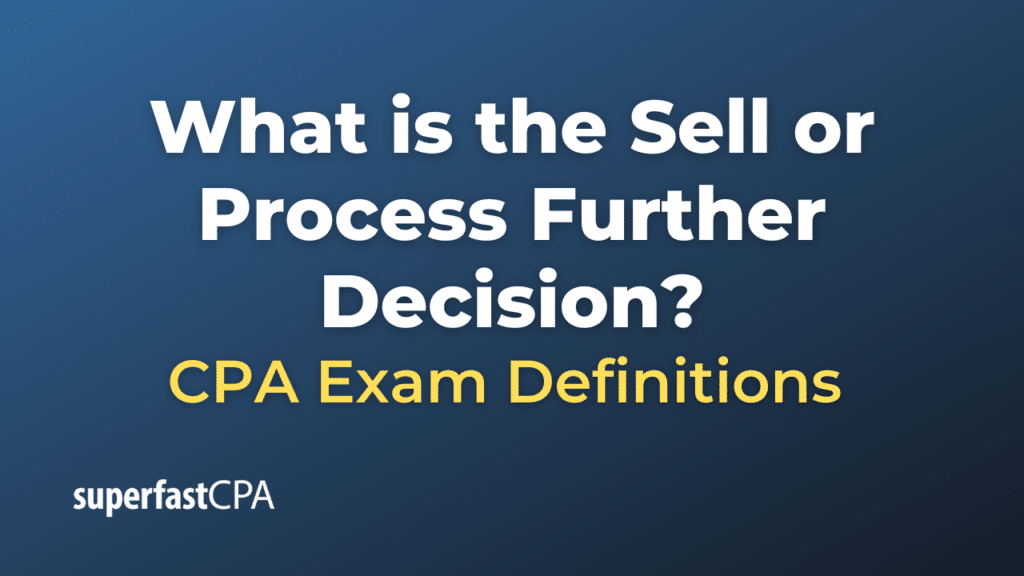Sell or Process Further Decision
The “sell or process further” decision, often encountered in managerial accounting and finance, pertains to the decision a company must make regarding partially finished products. Essentially, a company must determine whether it is more profitable to sell a product at a particular intermediate stage or to process it further and then sell the finished product.
This decision is especially relevant in industries where products can be sold at multiple stages of the production process. The key to the decision lies in comparing the additional revenues generated from further processing to the additional costs associated with that further processing.
Key Factors to Consider:
- Incremental Revenue: How much additional revenue can be generated by processing the product further and selling it as a finished product?
- Incremental Costs: What are the additional costs (both variable and fixed) associated with further processing?
- Opportunity Costs: Are there other opportunities or uses for the resources that would be employed in the additional processing?
If the incremental (or additional) revenue from further processing exceeds the incremental costs, then it would be financially beneficial to process the product further. If the opposite is true, it’s better to sell the product as is.
Example of the Sell or Process Further Decision
Dairy Delights Farm produces milk from its herd of cows. Once collected, the milk can either be sold as fresh milk or processed further into cheese. Dairy Delights is evaluating which option would be more profitable.
Data:
- Selling Milk:
- Revenue from selling one gallon of milk: $3.00
- Cost of producing one gallon of milk (including feeding the cows, labor, utilities, etc.): $1.50
- Processing Milk into Cheese:
- Cost to process one gallon of milk into cheese (including additional labor, utilities, aging costs, etc.): $2.50
- Revenue from selling cheese made from one gallon of milk: $7.00
Analysis:
- If Sold as Milk:
- Gross profit per gallon = Revenue – Cost of production
- Gross profit = $3.00 (revenue) – $1.50 (cost) = $1.50
- If Processed into Cheese:
- Incremental revenue from processing into cheese = $7.00 (cheese sale price) – $3.00 (milk sale price) = $4.00
- Net profit from cheese = Incremental revenue – Cost to process into cheese
- Net profit = $4.00 (incremental revenue) – $2.50 (processing cost) = $1.50
- Gross profit for cheese = $1.50 (net profit from cheese) + $1.50 (gross profit if sold as milk) = $3.00
Decision: Comparing the profits:
- Profit from selling as milk: $1.50 per gallon
- Profit from processing into cheese: $3.00 per gallon
Thus, Dairy Delights would make more profit by processing the milk into cheese rather than selling it as fresh milk.
This example demonstrates the “sell or process further” decision. By evaluating the additional revenue and costs associated with further processing, Dairy Delights can make an informed choice to maximize profits. However, they’d also need to consider other factors in a real-world scenario, such as market demand for milk versus cheese, storage costs, and potential risks associated with unsold perishable products.













